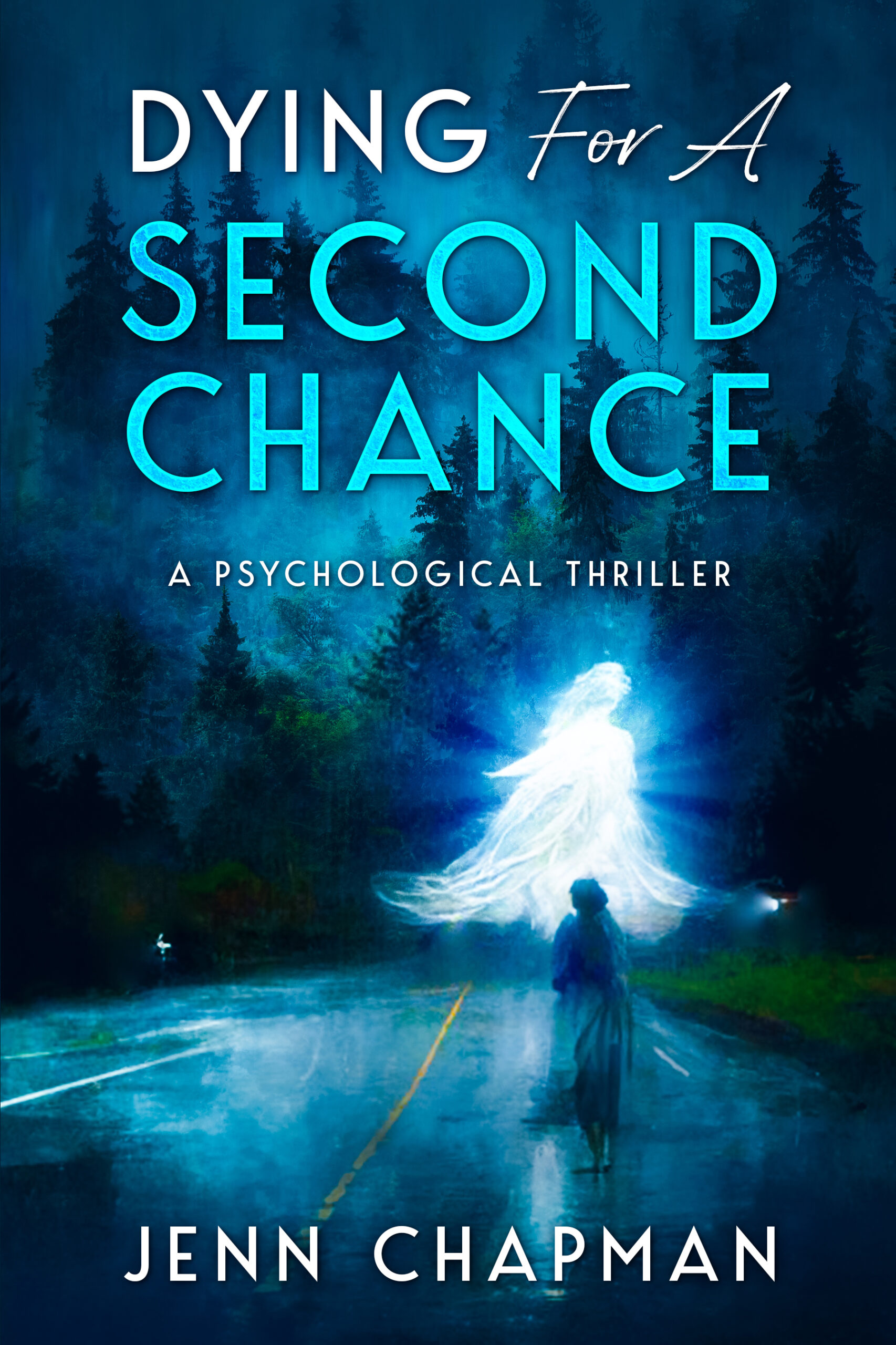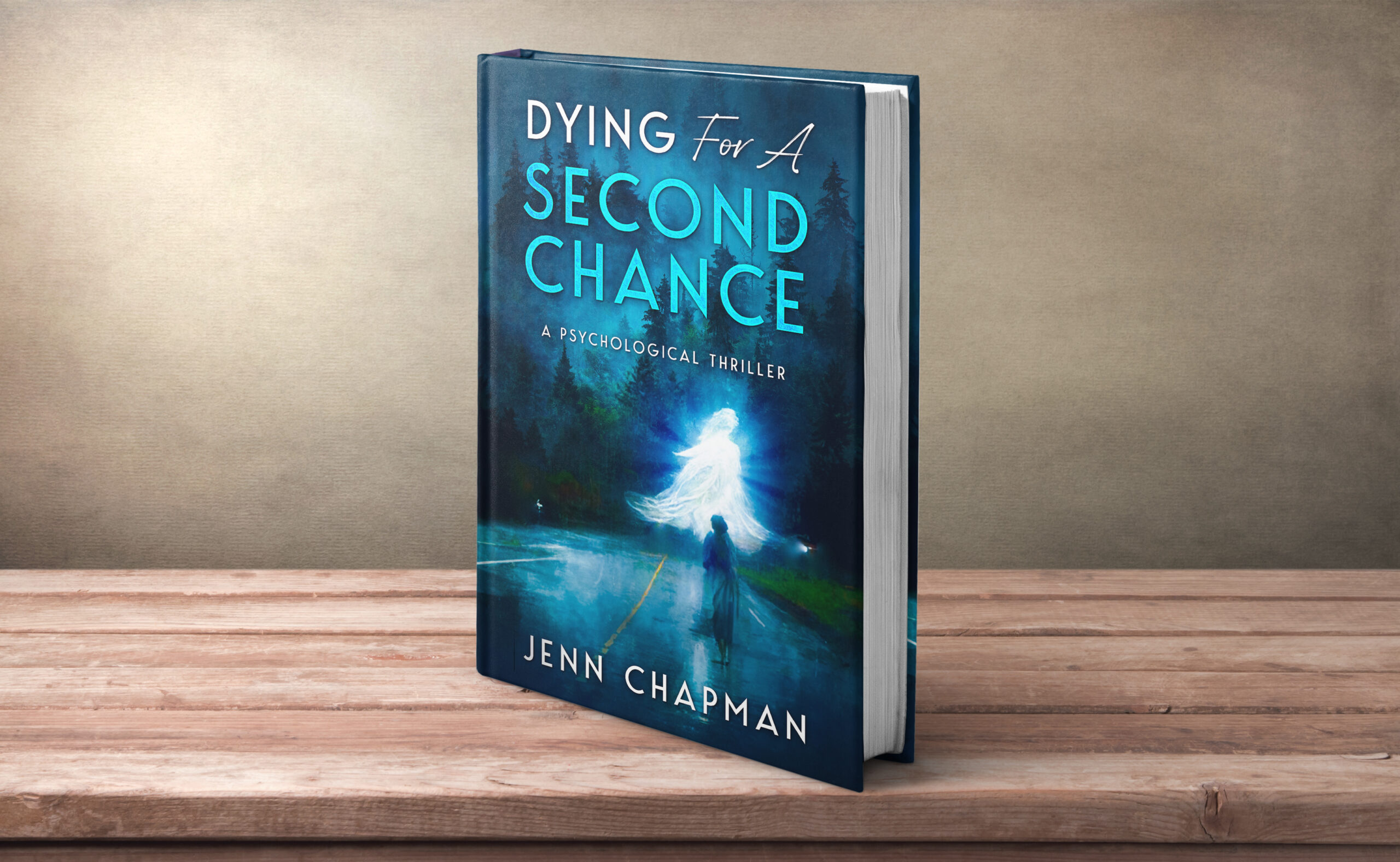Dying for a Second Chance by Jenn Chapman
Amidst the dark and scary stories of this coming season, Jenn Chapman’s debut psychological thriller, Dying for a Second Chance, stands out for its acute portrayal of the human spirit — and its determination to keep on living.
One dark and stormy night, a horrible car accident takes the life of young Marie Harper, leaving her six-month-old daughter, Heather, orphaned. But Marie isn’t actually dead; after begging God to let her live and be with her baby girl, Marie wakes up in the body of Jessica Wilson, the passenger in the other car.
Jessica is married to the one man Marie never wanted to see again: James. The man who raped her. Heather’s biological father. Now her sole living relative, James (known as Jimmy) takes custody of Heather. And if Marie wants to be with her little girl, she must pretend to be Jessica.
Meanwhile, Sergeant Rodney Kills On Top, the lead investigator on the car wreck, begins putting pieces together and thinks Marie is linked to a serial killer case going back years. He quickly begins to suspect Jimmy as the killer, but something’s off.
Enlisting the aid of an old friend, Rod researches Jimmy’s past and uncovers a gruesome secret.
Jimmy claims to love Jessica — but a monster lurks underneath, and proves she may be in more trouble than she realizes.
Part of what gives Dying for a Second Chance such real depth is its inclusion of various spiritual beliefs and practices, particularly that of North American native tribes and the Baha’i faith. Chapman drew on her own personal experiences to flush out these characters, including her own Baha’i beliefs and her time spent with Indigenous populations in Washington State and North Dakota.
But Chapman pulled even more inspiration from her real life in the creation of Jimmy/James. According to her bio, Chapman drew from experiences with her physically and emotionally abusive mother (who was later in life diagnosed as a psychopath), as well as a husband who had a serious personality/character disorder.
It’s perhaps because of her own personal experiences that Chapman made Jimmy/James such a dynamic and interesting character. Chapman does a commendable job showing compassion for all her characters, particularly Jimmy. He is simultaneously likable, pitiable and abysmal, leaving readers with conflicting feelings. How do we want Jimmy’s story to end?
This psychological thriller does more than entertain; it shows the width and breadth of the human spirit and its resilience amidst turmoil. From Marie’s spiritual transfer to Jimmy’s monstrous side, the author asks: what does it mean to be me?
About Jenn Chapman:
Jenn Chapman drew on experiences with people in her inner circle who had serious personality/character disorders to create the serial killer character in this thriller. Jenn is a retired educator who spent several years during her teaching career working with indigenous populations in Washington State and North Dakota. Jenn loved the inclusion of the tribal elders in the preschool educational program and decided to create intergenerational programs in the wider society using that model. She wrote Quality Care: An Intergenerational Approach. She partnered with an architect, Dyke Turner, to start Bridgings, Inc, where they designed and oversaw the building of several intergenerational programs, ultimately receiving an award from Generations United. Their programs were showcased in newspapers, magazines, on newscasts and on Good Morning America.





